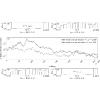当前位置:
X-MOL 学术
›
Phys. Rev. E
›
论文详情
Our official English website, www.x-mol.net, welcomes your
feedback! (Note: you will need to create a separate account there.)
Noncooperative dynamics in election interference
Physical Review E ( IF 2.2 ) Pub Date : 2020-02-19 , DOI: 10.1103/physreve.101.022307 David Rushing Dewhurst , Christopher M. Danforth , Peter Sheridan Dodds
Physical Review E ( IF 2.2 ) Pub Date : 2020-02-19 , DOI: 10.1103/physreve.101.022307 David Rushing Dewhurst , Christopher M. Danforth , Peter Sheridan Dodds

|
Foreign power interference in domestic elections is an existential threat to societies. Manifested through myriad methods from war to words, such interference is a timely example of strategic interaction between economic and political agents. We model this interaction between rational game players as a continuous-time differential game, constructing an analytical model of this competition with a variety of payoff structures. All-or-nothing attitudes by only one player regarding the outcome of the game lead to an arms race in which both countries spend increasing amounts on interference and counterinterference operations. We then confront our model with data pertaining to the Russian interference in the 2016 United States presidential election contest. We introduce and estimate a Bayesian structural time-series model of election polls and social media posts by Russian Twitter troll accounts. Our analytical model, while purposefully abstract and simple, adequately captures many temporal characteristics of the election and social media activity. We close with a discussion of our model's shortcomings and suggestions for future research.
中文翻译:

选举干预中的非合作动力
外国势力对国内选举的干预是对社会的生存威胁。从战争到语言,无数种方式都体现了这种干扰,这是经济和政治主体之间战略互动的及时例子。我们将有理性的游戏玩家之间的这种互动建模为连续时间的差分游戏,从而构建了具有多种收益结构的竞争分析模型。只有一名玩家对比赛结果的全有或全无的态度导致了军备竞赛,两国都在干涉和反干涉行动上花费越来越多的钱。然后,我们通过与俄罗斯干预2016年美国总统大选相关的数据来对抗我们的模型。我们介绍并估算了俄罗斯推特巨魔账户的民意测验和社交媒体帖子的贝叶斯结构时间序列模型。我们的分析模型虽然有目的抽象和简单,但可以充分体现选举和社交媒体活动的许多时间特征。最后,我们讨论了模型的不足之处以及对未来研究的建议。
更新日期:2020-02-19
中文翻译:

选举干预中的非合作动力
外国势力对国内选举的干预是对社会的生存威胁。从战争到语言,无数种方式都体现了这种干扰,这是经济和政治主体之间战略互动的及时例子。我们将有理性的游戏玩家之间的这种互动建模为连续时间的差分游戏,从而构建了具有多种收益结构的竞争分析模型。只有一名玩家对比赛结果的全有或全无的态度导致了军备竞赛,两国都在干涉和反干涉行动上花费越来越多的钱。然后,我们通过与俄罗斯干预2016年美国总统大选相关的数据来对抗我们的模型。我们介绍并估算了俄罗斯推特巨魔账户的民意测验和社交媒体帖子的贝叶斯结构时间序列模型。我们的分析模型虽然有目的抽象和简单,但可以充分体现选举和社交媒体活动的许多时间特征。最后,我们讨论了模型的不足之处以及对未来研究的建议。











































 京公网安备 11010802027423号
京公网安备 11010802027423号